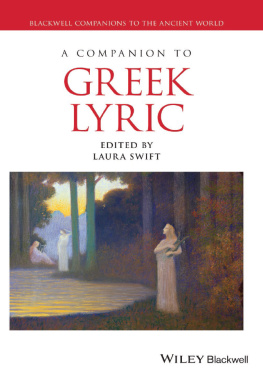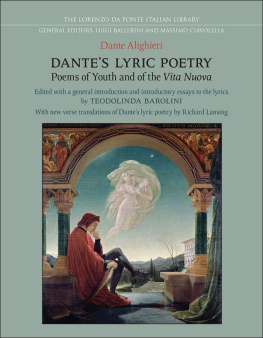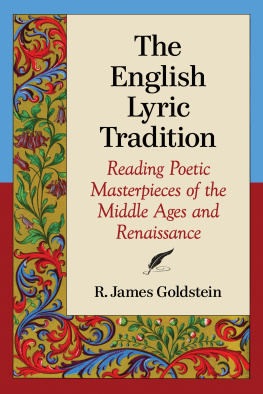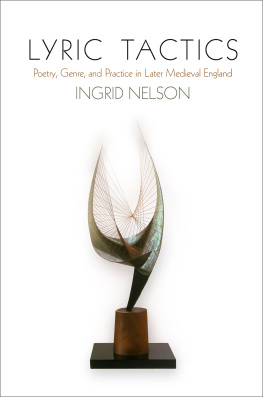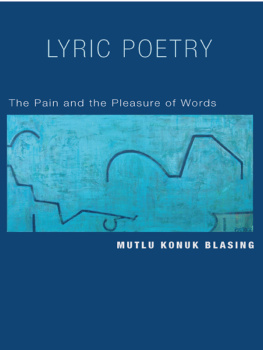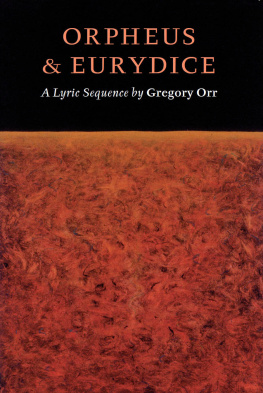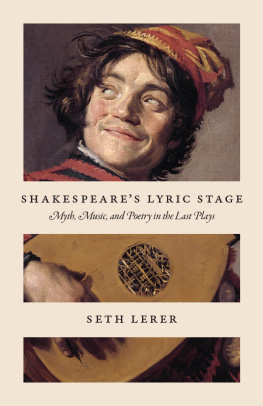The Challenges of Orpheus
The Challenges of Orpheus
Lyric Poetry and Early Modern England
HEATHER DUBROW

2008 The Johns Hopkins University Press
All rights reserved. Published 2008
Printed in the United States of America on acid-free paper
2 4 6 8 9 7 5 3 1
The Johns Hopkins University Press
2715 North Charles Street
Baltimore, Maryland 21218-4363
www.press.jhu.edu
Library of Congress Cataloging-in-Publication Data
Dubrow, Heather
The challenges of Orpheus : lyric poetry and early modern England /
Heather Dubrow.
p. cm.
Includes bibliographical references (p. ) and index.
ISBN-13: 978-0-8018-8704-8 (hardcover : alk. paper)
ISBN-10: 0-8018-8704-6 (hardcover : alk. paper)
1. English poetryEarly modern, 1500-1700History and
criticismTheory, etc. 2. Literature and societyEnglandHistory.
3. PoeticsHistory. 4. Literary formHistory. I. Title.
PR549.L8D83 2007
821'.0409dc22 2007018748
A catalog record for this book is available from
the British Library.
Special discounts are available for bulk purchases of this book. For more
information, please contact Special Sales at 410-516-6936 or
.
For my students
Contents
1 The Rhetoric of Lyric: Definitions,
Descriptions, Disputations
6 The Rhetorics of Lyric: Conclusions
and New Perspectives
Acknowledgments
The norms of lyric oftenthough, I will argue, not invariablygenerate short poems. The debts I incurred while writing about lyric generate a long list. My work on this book has been supported by the Guggenheim Foundation, the National Endowment for the Humanities, and the Graduate School Research Committee of the University of Wisconsin-Madison. I am grateful for the efficiency, judiciousness, and encouragement of Michael Lonegro, my editor at the Johns Hopkins University Press. I am delighted to have the opportunity to acknowledge my indebtedness to the following colleagues for useful information and suggestions: Stephen Buhler, Ronald Bush, Jonathan Culler, the late Gwynne Blakemore Evans, David Fleming, Cecilia Ford, Sara Guyer, Hannibal Hamlin, Jonathan Hart, Jane Hedley, Richard Helgerson, Jean Howard, Wendy Hyman, Robert Kaufman, Lynn Keller, Theresa Kelley, Richard Knowles, Barbara Lewalski, Jennifer Lewin, David Loewenstein, Harold Love, Carole New-lands, Jack Niles, Marcy North, James Phelan, Anne Lake Prescott, Patricia Rosenmeyer, David Schalkwyk, Henry Turner, William Waters, Neil White-head, Helen Wilcox, Susanne Wofford, Linda Woodbridge, and Carla Zecher. Special thanks to those who also read and offered valuable advice about chapters of the manuscript: Marshall Brown, Colin Burrow, Bonnie Costello, Mary Crane, Roland Greene, Jack Niles, James Phelan, Thomas Schaub, and the members of my departments Draft Group. By fostering my own career as a poet, the creative writers in my department fostered my work on this book; I am grateful to Ronald Wallace in particular. A series of conscientious research assistants worked energetically and meticulously on the manuscript: Sarah Armstrong, Patricia Frank, Kimberly Huth, David Plastrik, Jason Siegel, and Aaron Spooner. It is a pleasure as well to acknowledge the indirect but nonetheless powerful contributions of the two undergraduate teachers who developed my interest in lyric poetry: the late David Kalstone and Neil Rudenstine. Some thirty years ago Sandy Mack became both a mentor to me and a model for me of generous and judicious professionalism; his helpfulness on innumerable occasions in the intervening years has deepened my debt. By incorporating the names of two elementary school teachers, Mary and Patricia Tighe, into the title of my endowed chair, I emphasized the significance of K-12 teachers, and I want to acknowledge it here as well. My debts toand delight inmy own students, ranging from undergraduates to dissertators, are enumerated in the endnotes and celebrated in the dedication. Over the past six years, Donald Rowe has enriched this book in many ways; over the past sixteen years, he has enriched the life of its author in even more ways.
Part of have also appeared in earlier form elsewhere and are reprinted with the permission of the publishers: The Interplay of Narrative and Lyric: Competition, Cooperation, and the Case of the Anticipatory Amalgam, Narrative 14 (2006), 254271; He had the dialect and different skill: Authorizers in Henry V, A Lovers Complaint, and Othello, in Critical Essays on Shakespeares A Lovers Complaint: Suffering Ecstasy, ed. Shirley Sharon-Zisser (Burlington, VT: Ashgate, 2006, pp. 121136).
Note to the Reader
With one exception, my citations of Renaissance texts retain the original spelling, but I have regularized u/v and i/j, as well as the capitalization in titles, and ampersands have been replaced; in the instance of Spenser, however, orthography is not regularized.
The Challenges of Orpheus
Introduction
Despite the problems posed by defining and describing lyric, the term appears with telling frequency in contexts ranging from the scholarship of many disciplines to the seductions of Madison Avenue to the stanzas of lyric poets themselves. Northrop Frye, characteristically no less acerbic than acute, remarks that there is a popular tendency to call anything in verse a lyric that is not actually divided into twelve books.
Positioned by John Stuart Mill, Theodor W. Adorno, and many others as an antithesis and even potentially an antidote to the commodified marketplace, lyric has nonetheless repeatedly been impressed into the service of commodification.because it has the delicacy sometimes attributed to that mode or because it will contain the drink supposed to inspire it. A bar in Madison, Wisconsin, perhaps playing on that same ambiguity, sports the name Liquid Lyric Lounge, presumably encouraging its more sober patrons to debate whether the adjective applies to poetic or potable fare.
Poets too have attempted to deploy the resonances of the term present in both scholarly discussions and advertisements. When Robert Herrick declares in An Ode to Sir Clipsebie Crew that A Goblet, to the brim, / Of Lyrick Wine (1516) will be quaffed, he is referring not only to the wines capacity to inspire poetry and its association with Anacreon but also to the energy and sensuous pleasure that it, like poetry, can evoke. In our own era, the Irish poet Eavan Boland writes of an illness:
I re-construct the soaked through midnights;
vigils; the histories I never learned
to predict the lyric of
(Fever, 2527)
In the context of a poem where fever is associated with desire, loss, and irrationality and where disease also arguably gestures towards the presence of all three in Irish politics, lyric here seems to represent both the beauty and the meaning that are lost when temperatures rise. By linking that mode to histories (26), Boland also alerts her readers to the frequency with which it can be the companion and culmination of narrative rather than a temporary impediment, a point explored in .
A more cynical view of lyric is adumbrated by the twentieth-century Australian poet and librettist Gwen Harwood, whose own work in that mode is extraordinary in its range and complexityno less extraordinary than the widespread neglect of it in both Great Britain and the United States. In a poem about the many ways communication breaks down when a marriage does, she declares, Master writes a lyric poem / So his pain is manifest (Fidos Paw is Bleeding, 2122), thus ironically gesturing towards yet another way the expository functions of language can really be an instrument for misleading oneself, others, or both.
Next page

